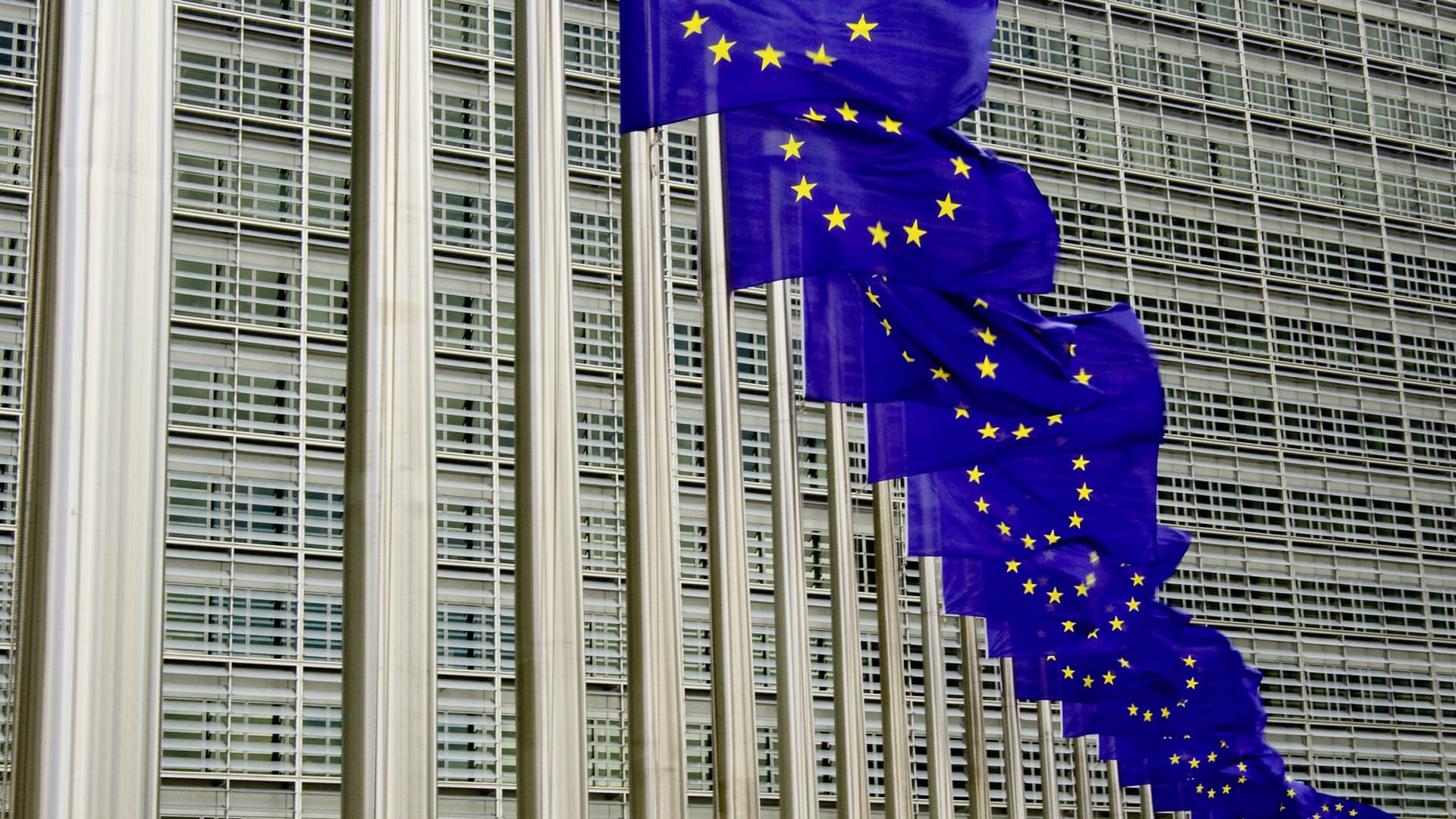
The EU wants to cut greenhouse gas emissions by at least 55% by the year 2030, compared to 1990.
Justhavealook | E+ | Getty Images
Plans for the European Union’s Carbon Border Adjustment Mechanism took a significant step forward Tuesday morning after a provisional deal between the Council of the EU and members of the European Parliament was reached.
In a statement, the Parliament said the CBAM levy would be established “to equalise the price of carbon paid for EU products operating under the EU Emissions Trading System (ETS) and the one for imported goods.”
Under the plans, firms importing into the EU will need to buy “CBAM certificates.” These will be used to make up the difference “between the carbon price paid in the country of production and the price of carbon allowances in the EU ETS,” the statement said.
The CBAM will cover a range of goods and sectors such as electricity, fertilizers, aluminum, cement, steel and iron. It has also been broadened to include hydrogen and other products like bolts and screws.
“Only countries with the same climate ambition as the EU will be able to export to the EU without buying CBAM certificates,” Tuesday’s statement said, adding that the plans had been designed to fully comply with World Trade Organization rules.
The new rules, it said, would “ensure that EU and global climate efforts are not undermined by production being relocated from the EU to countries with less ambitious policies.”
The European Parliament’s statement described the new bill as being “the first of its kind.” It is set to apply from October 2023, with a built-in transition period.
“CBAM will be a crucial pillar of European climate policies,” Mohammed Chahim, a member of the European Parliament, said. “It is one of the only mechanisms we have to incentivise our trading partners to decarbonise their manufacturing industry.”
In its own statement, the Council of the EU (government ministers from each EU country) said Tuesday’s agreement still had to be confirmed by the European Parliament, EU member states’ ambassadors, and then “adopted by both institutions before it is final.”
The CBAM is a significant cog in the EU’s broader goal to cut greenhouse gas emissions by at least 55% by the year 2030, compared to 1990.
Plans for the mechanism have previously drawn ire from major economies such as China. The CBAM is also being formulated at a time when the EU has raised concerns about the United States’ Inflation Reduction Act.







